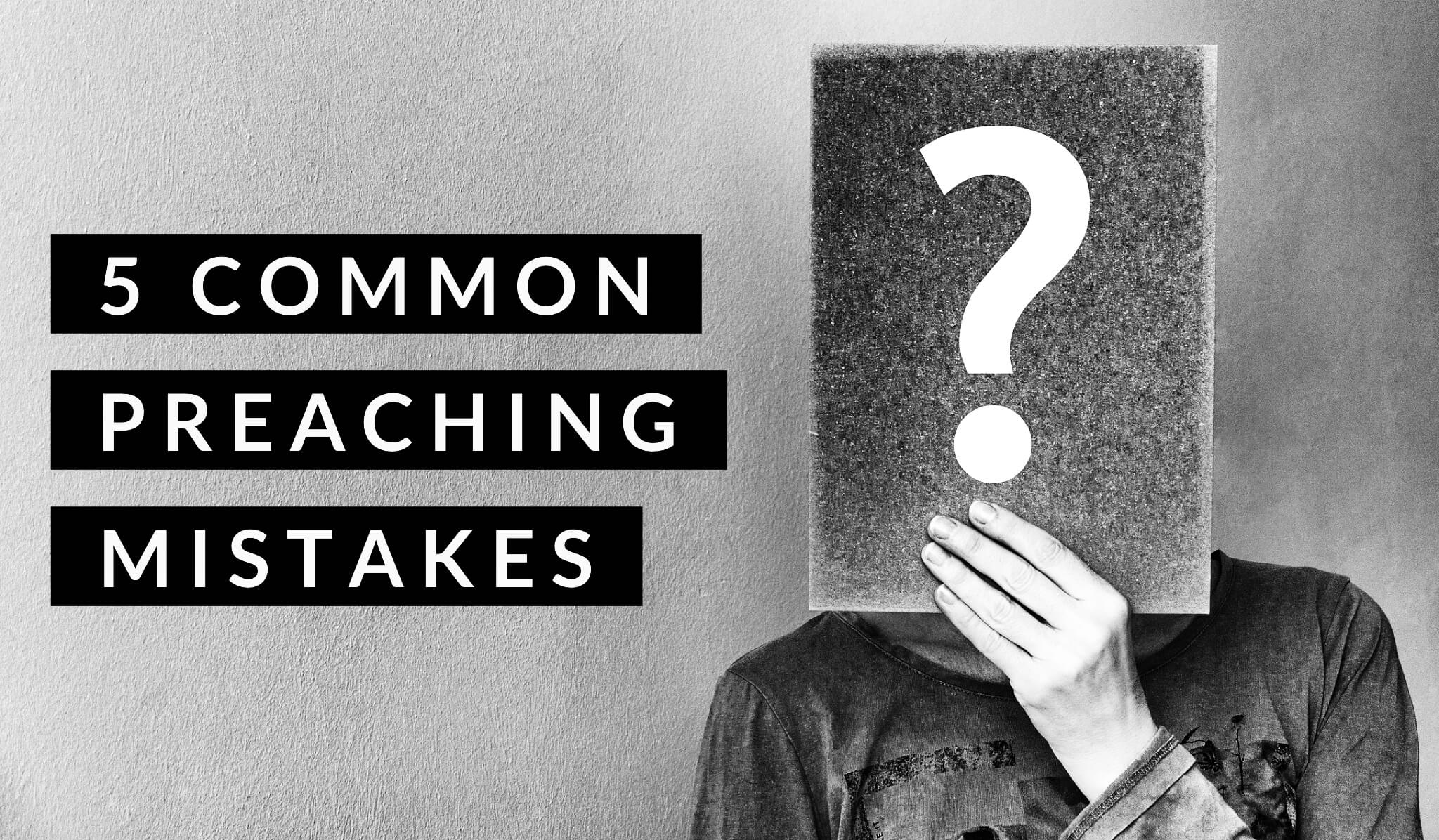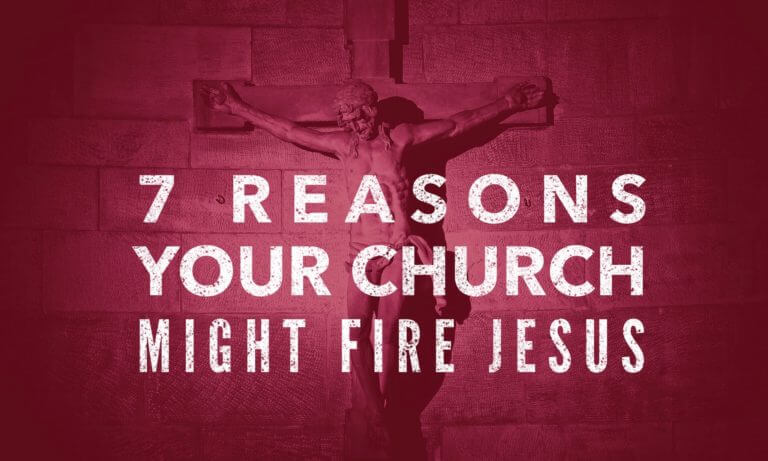How to Preach (Part 1): Sermon Writing
Learning how to preach can be scary. Very few people are excited by the idea of standing before a crowd of people, with all eyes on them, to deliver a thirty-minute or longer sermon.
Public speaking was always on the top of my list of greatest fears—just below death, spiders, and talking to girls. It’s just not something that comes naturally to most of us.
Where do you even start when you’re learning how to preach?
After more than a decade of preaching experience, studying preaching, teaching pastors about preaching, and writing a few books on the subject, I’m convinced that all great preaching has three phases.
Phase 1: Preparation – writing the sermon
Phase 2: Presentation – preaching the sermon
Phase 3: Evaluation – improving for your next sermon
I’ll be breaking this down into a three-part series, starting with the first phase of preaching.
Phase 1: Preparation (Writing the Sermon)
The first phase to preach a sermon is to prepare the message. You can’t preach if you haven’t prepared.
Sure, you might be able to wing a sermon or two, but that’s not sustainable and it will never be your best work.
There are seven steps for good sermon prep. I call this my 7-Step Sermon Prep. And you can download my 7-Step Sermon Prep checklist for free if you would like.
1. Pray
Prayer is the way we tap into God—the source of power for our sermons.
Do you want to preach a message backed by the power of God? Do you want the Holy Spirit to show up and change lives? You better pray.
You may be thinking, “Duh.” But did you actually pray yet? Don’t skip this!
Get on your knees before God and beg him for inspiration.
Pray before you ever sit down and stare at the blank page and blinking cursor on your computer screen. Pray before you ever crack your Bible. And don’t stop there.
However, you do it, beg God to show up. Ask the Holy Spirit to speak through you. Ask for direction and guidance for your message. Ask God to reveal to you what He wants you to say. Plead for hearts to be softened. Beg for lives to be changed.
You want no part in preaching apart from God. He alone has the power to use an imperfect messenger to deliver his perfect message.
2. Study
Good preaching begins with God’s Word as the foundation and pulls all of the ideas for the sermon out of Scripture.
Think of it as if you are excavating a section of the Bible. You start with the passage of Scripture and dig, and dig, and dig until you find all the treasures it contains. All of your illustrations, topics, titles, and creative ideas should flow out of what the Bible already says.
Pick the text you will preach. Read it over and over. Make sure you also read at least the chapter before and the chapter after the text so you understand it in it’s proper context.
Write down all your observations and questions. Then, after you’ve done your own study, break out the commentaries and other study tools. I personally use and highly recommend Logos Bible Software (use my link to get a discount and help support my work).
Your goal before you ever write a word of your sermon is to become an expert on the text you preach. This will make writing the sermon easier, and guard you against preaching anything that the Bible does not say.
The Bible must be the foundation of our message. It should underly everything we say and do. It isn’t just something we throw in to make our self-help talk a sermon.
The Bible is the very Word of God that molds and shapes human hearts in supernatural ways that no other book in human history ever has or ever will.
3. Focus
Find the one idea that God wants your congregation to hear from his Word. Then hit it with all you got.
What’s the one thing, based on the passage of Scripture, that your listeners need to remember when you are done preaching?
To get to the big idea, summarize the passage. Then, refine it as best as you can into a single, clear, memorable sentence.
Focusing on the big idea of the text will keep your sermon from rambling about a dozen different topics.
Great preaching stays laser-focused on a single big idea from the Bible.
4. Illustrate
Now comes the creativity for your sermon. Gather stories, videos, music, pictures, props, quotes, or any other creative ideas that might fit your message.
Collect more than you need. The best illustrations will rise to the top.
A good illustration compliments the sermon. It is a work of art that provides clarity, inspires action, or brings the message to life. Illustrations are meant to illuminate your message.
A bad illustration clashes with the sermon. It is an eyesore that confuses, distracts, or lessens the impact of the message. Sometimes an illustration is bad simply because you’ve used too many. Use them wisely.
The key is knowing your audience. When you know your audience, you’ll know which illustrations will connect.
5. Outline
Take your Scripture, study notes, big idea, and illustrations and piece it together into a full outline or manuscript.
Think of it like a puzzle. Each element is a piece that you move around until you find the right fit.
A clear outline is essential to a clear message.
However you structure your sermon, like all stories, every sermon has a beginning, a middle, and an end.
The beginning needs to grab your attention. The middle needs to hold your interest. The end needs to resolve the story (or the message) in a memorable way.
Generally, you want to introduce the problem in the introduction, reveal the solution of the Bible in the middle, and then drive home the big idea at the end.
6. Edit
Although you may feel like you are finished, editing is crucial. I guarantee that there are problems you overlooked.
There will be sections you wrote that looked good at the time, but upon further inspection, don’t fit. There will be illustrations you used that are too long, or unnecessary. There will also be plenty of typos, punctuation, and spelling mistakes that, if you’re a perfectionist like me, will drive you crazy.
Walk away for a bit to get a fresh perspective. Then, take a red pen to your message and mark it up. Cut anything that doesn’t fit. Kill whatever strays from the big idea.
This is a good time to share your message with a trusted g or two to get their input and feedback as well. You’ll be amazed at some of the insights another set of eyes can bring.
Move things around. Fix mistakes. Refine your sermon until it’s just right.
Editing will make your sermon clearer, sharper, shorter, and all around better.
7. Practice
Many pastors are tempted to skip practice because it takes a time and can be repetitive. Don’t get lazy!
Practicing your sermon is one of the biggest difference makers between being an average preacher and a great one.
Internalize and rehearse your message. Read it aloud. Practice with notes. Practice without notes. Make changes as needed. Don’t stop until you are comfortable with the material.
The better you know your message, the more confident you will be delivering it
Remember: Every time you practice, you are becoming a better preacher for every future sermon—not just this one.
Practice won’t make perfect. There is no such thing as a perfect sermon. But practice will definitely make you better.
If you want to learn more about these seven steps, I go much deeper in my book Preaching Nuts & Bolts, and more so in my course Best Preaching Year.
That’s it for Phase 1. Stay tuned for the next part of this three-part series, Phase 2: Delivery.
And if you haven’t already, subscribe to our free email list so you don’t miss an update.





I’ve learned so much from your videos
Very encouraging!
You are amazing brother, keep on doing it.
I am overwhelmed by the way you broke it out into phases. I really like your channel on YouTube and I have already subscribed.
Grace be with you!
Thank u so much for the notes, they are so helpful.
Very very helpful for me n my study. Bless you thanks